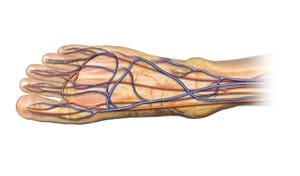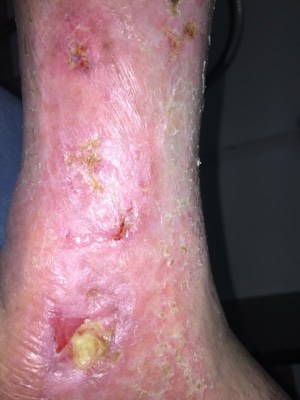
Minimally Invasive Treatments for Varicose Veins and Vein Disease
If you’re suffering from painful Vein Disease, unsightly varicose veins minimally invasive techniques are available. Patients today have options that just didn’t exist ten years ago.
Do you remember staring at the thick, blue, ropy veins on an older person’s legs? Did you stop and wonder what, exactly, was going on? This article will clear up this childhood mystery. Also, if you’ve got veins problems of your own it can point you in the right direction.
What you were looking at all those years ago are known as varicose veins. They’re perhaps the most outwardly visible signs of vein disease. Yet in reality the ugly veins you think you’re stuck with are just a symptom.
But first let’s start with a side note. Vein disease may sound scary, but in the vast majority of cases it isn’t life threatening. What vein disease can do, however, is leave you with tired, achy, swollen legs covered with unsightly varicose and spider veins.
The source of the problem lies much deeper in veins which can’t be seen on the surface. These form what is unsurprisingly known as the deep vein system. According to Dr. Robert Weiss of the Johns Hopkins School of Medicine, this is actually a good thing.
“It means that all of the real action is happening in the deep veins. That’s where the vital circulation takes place. We can destroy or remove the diseased surface veins without affecting your circulation,” he says. Later he adds “In reality, by removing bad surface veins, we’re actually improving your circulation.”
Varicose veins and other vein conditions are extremely common. The National Institutes of Health (NIH) puts the number at about 60% of all American adults. About 75% of those who suffer from varicose veins are women. Yet on average the 25% of males who have varicose veins have more severe symptoms. About 90% of those who seek help for varicose veins are women.

Ultimately nearly all vein conditions are caused by valve problems. Veins contain one-way valves which keep blood flowing towards the heart. When these valves become stretched out and begin to leak blood begins to trickle back down the legs. This is the source of both varicose and spider veins.
For many, this type of vein problem is more than just unsightly. Often so much fluid pools in the lower extremities that the legs start to feel heavy and tired. In many cases the legs also ache. Some patients experience outright pain which can be severe.
What’s more, when veins become stretched out they often become leaky. Clear fluid leaking from these weakened veins further increases pressure in the legs, which can decrease circulation. This can lead to rashes, skin changes, or in severe cases painful ulcers.
Home Remedies
Garlic and Lemons
If taken properly, garlic can treat a variety of heart and artery disorders. The goal of its overall treatment is to enhance the body’s blood circulation system. Garlic’s sulfurous components improve blood flow. Additionally, they stop the growth of blood clots and irritated blood valves.
Garlic contains potent anti-inflammatory effects that are crucial for decreasing varicose veins. Garlic contains flavonoids that aid to strengthen blood arteries and veins, protecting them from harm.
Apple Cinder Vinegar
Apple cider vinegar is a further effective home treatment for varicose veins. It promotes blood flow via the veins and aids in body cleansing. The veins will spontaneously stop swelling when the blood flow conditions are stable.
How Does Diabetes and Vein Disease Increases The Risk Of Lower Leg Ulcers?
Both diabetes and vein disease are known to significantly increase the risks of lower leg ulcers, here’s how:
- Poor Circulation: Diabetes damages blood vessels, which leads to reduced circulation, especially in the lower extremities. While vein diseases obviously affect veins directly, especially conditions like venous insufficiency, which causes poor blood flow in the legs. The this reduced circulation interferes with the body’s ability to heal would because of lack of blood, which leads to ulcers.
- Nerve Damage: One of the scariest thing about diabetes is nerve damage, also known as peripheral neuropathy. This reduced the sensations in legs and feet and makes it harder to detect injuries or pressure sores, which can help them turn into ulcers. And if you have vein diseases at the same time then it complicates the healing process even more.
- Weakened Immune Response: As mentioned earlier diabetes damages blood vessels which can interfere with immune system, this makes it harder for the body to fight off infections and exacerbate ulcers.
What Happens If Vein Diseases In The Legs Are Left Untreated?
There are several complications of ignoring vein diseases, here are some of them:
- Chronic Swelling: Also known as Edema, it can happen because of persistent poor circulation which causes fluid buildup un the legs, which finally leads to swelling that worsens overtime.
- Skin Changes: Vein diseases can lead to skin discoloration, thickening, or hardening or the skin if there’s a prolonged pressure and inflammation.
- Venous Leg Ulcers: Poor blood flow will lead to open sores and ulcers, which are really difficult to heal and prone to infection as well.
- Infection: As mentioned earlier, the healing process with vein problem isn’t in its best state, which means infections are even more dangerous. They can infect the surrounding skin, and increase the risk of cellulitis Or more severe infections.
